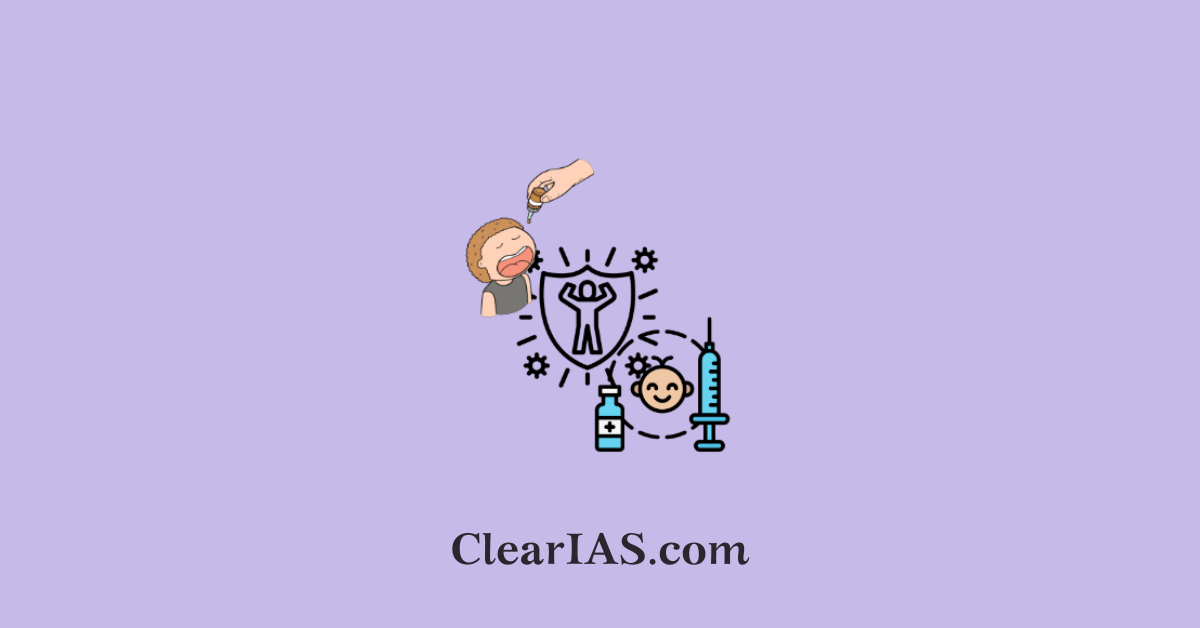
The World Health Organization (WHO) and UNICEF Estimates of National Immunization Coverage (WUENIC) are crucial metrics that track the progress of immunization programs worldwide. Read here to know more.
The WUENIC reports provide annual estimates of the national immunization coverage for various vaccines, allowing for the monitoring of immunization trends, identification of gaps, and implementation of strategies to improve vaccine coverage.
World Health Organization (WHO) and UNICEF Estimates of National Immunization Coverage (WUENIC)
Based on country-reported data, the annual WHO and UNICEF estimates of national immunization coverage (WUENIC) provide the world’s largest dataset on immunization coverage trends for 16 vaccines/antigens/doses across 195 WHO and UNICEF Member States.
- Data Collection and Analysis:
- WUENIC estimates are derived from data reported by countries to WHO and UNICEF, supplemented by other data sources such as demographic health surveys and multiple indicator cluster surveys.
- The data is analyzed to provide coverage estimates for vaccines in national immunization schedules, such as DTP (diphtheria-tetanus-pertussis), MCV (measles-containing vaccine), BCG (Bacillus Calmette-Guérin for tuberculosis), and polio vaccines.
- Coverage Indicators:
- DTP3 Coverage: Percentage of infants who received the third dose of the DTP vaccine.
- MCV1 and MCV2 Coverage: Percentage of children who received the first and second doses of the measles-containing vaccine.
- Polio Vaccination Coverage: Percentage of children who received the oral polio vaccine (OPV) or inactivated poliovirus vaccine (IPV).
- Global and Regional Trends:
- WUENIC provides a global overview of immunization coverage, highlighting areas of progress and regions where coverage is lagging.
- It identifies disparities in vaccine coverage across different regions and countries, emphasizing the need for targeted interventions.
- Impact on Public Health:
- High immunization coverage is critical for preventing outbreaks of vaccine-preventable diseases, reducing child mortality, and achieving herd immunity.
- WUENIC data helps in tracking progress towards global immunization goals, such as those outlined in the Global Vaccine Action Plan (GVAP) and the Sustainable Development Goals (SDGs).
- Challenges and Recommendations:
- The WUENIC reports highlight challenges such as vaccine hesitancy, logistical issues, conflict zones, and health system weaknesses that affect immunization coverage.
- Recommendations include strengthening health systems, improving vaccine supply chains, engaging communities, and leveraging technology to track and promote immunization.
Importance of WUENIC
- Policy Making: Governments and health organizations use WUENIC data to inform policy decisions, allocate resources, and design interventions to improve immunization coverage.
- Monitoring and Evaluation: The estimates allow for the evaluation of national and global immunization programs, identifying successes and areas needing improvement.
- Advocacy: WUENIC data supports advocacy efforts by highlighting the importance of immunization and the need for continued investment in vaccination programs.
Key highlights of the National Immunization Coverage report
- Global childhood immunization coverage stalled in 2023, leaving 2.7 million additional children un- and under-vaccinated compared to pre-pandemic levels in 2019.
- According to the findings, the number of children who received three doses of the vaccine against diphtheria, tetanus and pertussis (DTP) in 2023 – a key marker for global immunization coverage – stalled at 84 per cent (108 million).
- However, the number of children who did not receive a single dose of the vaccine increased from 13.9 million in 2022 to 14.5 million in 2023.
- In 2023, only 83 per cent of children worldwide received their first dose of the measles vaccine through routine health services, while the number of children receiving their second dose modestly increased from the previous year, reaching 74 per cent of children.
- The share of adolescent girls globally who received at least 1 dose of the HPV vaccine, which protects against cervical cancer, increased from 20 per cent in 2022 to 27 per cent in 2023. This was largely driven by strong introductions in Gavi-supported countries, such as Bangladesh, Indonesia, and Nigeria.
WUENIC Findings on India
The coverage rate for DPT3, the third dose of diphtheria, pertussis and tetanus vaccines, in India rose to an all-time 93% in 2022, surpassing the previous pre-pandemic best of 91% recorded in 2019, and also marking a sharp increase from the 85% recorded in 2021.
- In 2023, 1.6 million children missed crucial Diphtheria, pertussis, and tetanus (DPT) and measles vaccinations.
- India lacks human papillomavirus (HPV) vaccination in national programs despite cervical cancer being the second-highest cancer in women (18% of female cancers).
- India accounted for 2 million zero-dose children. Zero-dose children are those who lack access to or are never reached by routine immunization services.
Frequently Asked Questions (FAQs)
Q. What are the WHO/UNICEF Estimates of National Immunization Coverage?
Ans: Based on country-reported data, the annual WHO and UNICEF estimates of national immunization coverage (WUENIC) provide the world’s largest dataset on immunization coverage trends for 16 vaccines/antigens/doses across 195 WHO and UNICEF Member States.
Q. What is the methodology behind the WHO/UNICEF estimates of national immunization coverage?
Ans: Each year WHO and UNICEF generate estimates of national immunization coverage that are based on coverage data officially reported to the organizations by Member States as well as data reported in the published and grey literature, for example, coverage surveys. Whenever possible we have consulted with local experts – primarily national Expanded Programme on Immunization (EPI) managers and regional office staff – for additional information regarding the performance of specific immunization programmes
Q. How long have the WUENIC estimates been produced?
Ans: The WHO/UNICEF estimates of national immunization coverage began to be produced in 1999 and initially and covered just five vaccines. Since 2001, the methodology has been improved, the estimates have been produced every year and vaccination coverage estimates are now made for 195 countries and 16 vaccines/antigens/doses.
Q. How many vaccines are given to a child in India?
Ans: Under India’s Universal Immunization Programme 12 different vaccines are provided to beneficiaries free of cost, through the government health system. These are – BCG, OPV, Hepatitis B, Pentavalent, Rotavirus Vaccine, PCV, IPV, Measles/MR, JE, DPT, and TT.
Related articles:
-Article by Swathi Satish






Leave a Reply